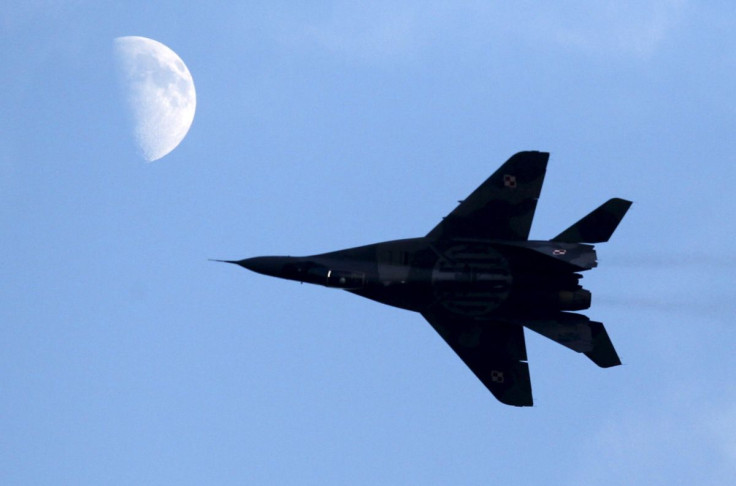U.S. Surprised At Poland's Decision To Give It Fighter Jets For Ukraine

Poland's decision to put all its MiG-29 fighter jets at the disposal of the United States was "a surprise move" by Warsaw, the U.S. State Department's No. 3 diplomat said on Tuesday, after Ukraine asked European countries to provide aircraft to help it fight Russia's invasion.
"To my knowledge, it wasn't pre-consulted with us that they planned to give these planes to us," State Department Undersecretary of State for Political Affairs Victoria Nuland told a Senate Foreign Relations Committee hearing. "So I think that actually was a surprise move by the Poles," she said.
Poland is ready to deploy all its MiG-29 jets to Ramstein Air Base in Germany and put them at the disposal of the United States, and urges other NATO members that own planes of that type to do the same, the Polish Foreign Ministry said earlier.
Ukrainian President Volodymyr Zelenskiy last week made a "desperate plea for European countries to provide Russian-made planes" for Ukraine's fight against Russian invaders during a video call Saturday with U.S. lawmakers.
U.S. lawmakers have been pushing the Biden administration to facilitate the transfer of fighter aircraft to Ukraine from Poland and other NATO and Eastern European countries.
The administration has been discussing Ukraine's request with Poland. U.S. administration officials said there were logistical challenges both in moving aircraft into Ukraine and providing replacement American planes.
The decision by Warsaw to offer its fleet of Soviet-era MIG-29 fighter jets to the United States set experts in the U.S. government scrambling for information on the legal constraints around the retransfer of the jets to Ukraine.
Nuland said the main issue was to assess what Poland's immediate needs would be given it is adjacent to the conflict.
"Poland -- they benefit from full air security from the NATO alliance. ... The main issue is to evaluate what Poland's immediate needs are in the context of being a neighbor of this conflict," she said, adding that Washington was also looking at putting some Patriot missile batteries into Poland.
Poland is supporting Kyiv with defensive weapons, but has said it would not send jets to Ukraine, as it is not a direct party to the conflict between Ukraine - which is not a NATO ally - and Russia.
CUTTING THROUGH RED TAPE?
The U.S. Air Force and Department of Defense officials were still trying to understand the repercussions of the Polish MiG transfer but said the White House's National Security Council was in the best position to understand whether the United States could even accept the jets as a donation.
If that donation were possible, it was unclear whether the U.S. could then transfer the jets to Ukraine, or whether the jets needed to be accepted, declared as excess, and then go through a process of transfer for excess defense articles.
Landing slots for the Polish jets at a U.S. air base in Germany and other practical concerns on how to physically get the jets into Ukraine were other unanswered legal questions, experts said.
The National Security Council did not immediately respond to a request for comment.
The United States maintains a reserve of excess weapons, which can be transferred to other nations as long as certain statutory and regulatory hurdles are cleared.
If the MIGs are able to be classified as excess defense articles, the president is required to give Congress 30 days' notice of a transfer, said Franklin Turner, a government contracts lawyer at McCarter & English.
He added that there was "a tremendous amount of red tape that clogs this process" and that Biden's ability to cut through it was constrained by existing legal requirements.
© Copyright Thomson Reuters 2024. All rights reserved.





















